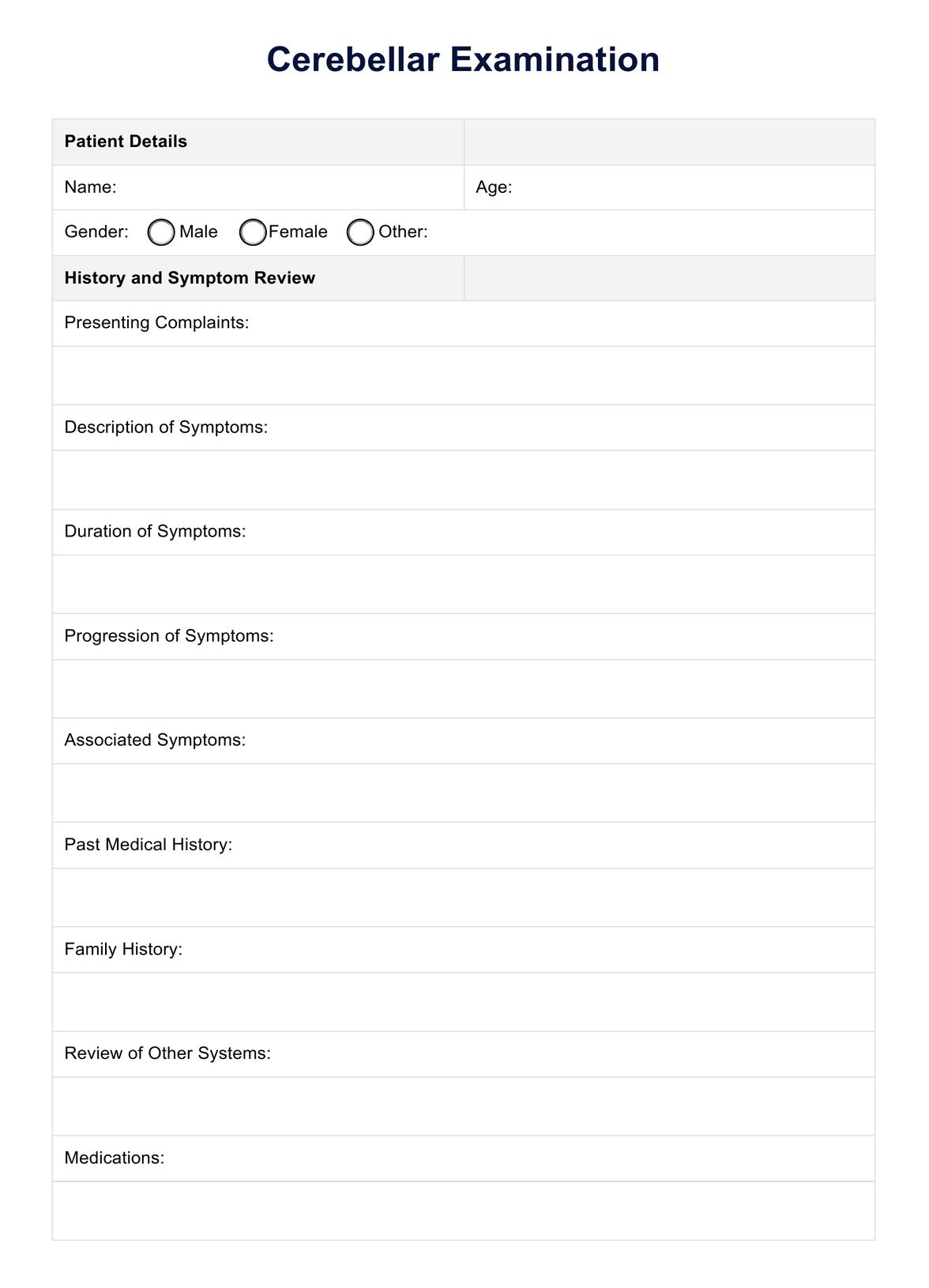The Cerebellar Exam typically takes 10–15 minutes, although this may vary based on the patient's condition.

Cerebellar Exam
Discover the comprehensive guide to conducting a Cerebellar Exam. Enhance patient care via effective neurological assessments. Learn more today with Carepatron.
Use Template
Cerebellar Exam Template
Commonly asked questions
Interpreting the Cerebellar Exam involves comparing the findings to normal, expected results. Any deviation may indicate potential cerebellar dysfunction.
The Cerebellar Exam is used when there's suspicion of cerebellar dysfunction, often evidenced by symptoms like unsteady gait, lack of coordination, or problems with delicate motor tasks.
EHR and practice management software
Get started for free
*No credit card required
Free
$0/usd
Unlimited clients
Telehealth
1GB of storage
Client portal text
Automated billing and online payments











